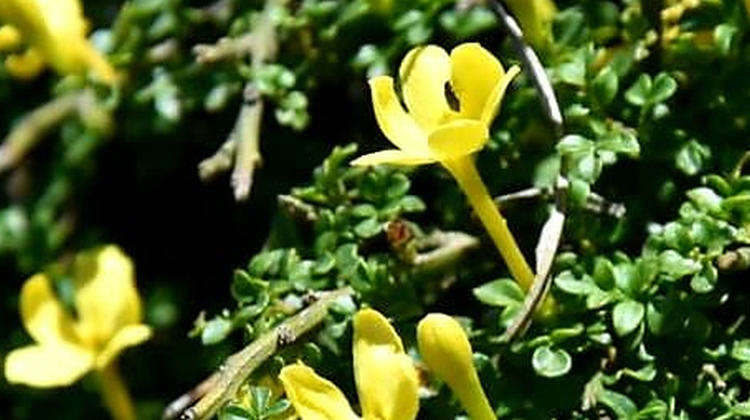In a remarkable discovery, the elusive yellow Jasmine flower, believed to be extinct for 133 years, has been found flourishing in the forests of Bharmour in Chamba district, Himachal Pradesh. The flowering plants of this species were last documented in the same region way back in 1890. The find came to light during a recent search campaign conducted by the Wildlife Department, led by Chamba Divisional Forest Officer Amit Sharma. With the sighting of the yellow Jasmine plant, plans are now underway to ensure the conservation and protection of this rare species.
During a thorough exploration of the forests in Bharmour, the team from the Wildlife Department made a ground-breaking discovery—a yellow Jasmine plant in a forest adjacent to the Garima area. This remarkable find marks the first record of flowering plants belonging to this species in Chamba since 1890. Excitement is brewing among botanists, researchers, and nature enthusiasts as they recognize the ecological significance of this rediscovery.
Recognizing the importance of preserving this rare and endangered species, the Wildlife Department has initiated plans for the conservation of yellow Jasmine plants. Divisional Forest Officer Amit Sharma expressed the department’s commitment to working in a systematic and organized manner to ensure the successful conservation of this species. Detailed strategies and measures will be devised to protect the habitat, propagate the plant, and raise awareness about its significance.
The yellow Jasmine, also known as Dwarf Jasmine, Himalayan Jasmine, or Parker Jasmine, belongs to the Oleaceae family. Native to the western Himalayas, this dwarf variety typically grows to a height of one foot and spreads to about 2.5 feet wide. It thrives in a range of soil conditions but prefers well-drained areas. The plant can tolerate both full sun and partial shade. With compact compound pinnate leaves comprising three to five leaflets, this deciduous shrub adds a touch of elegance to its surroundings. The yellow Jasmine blooms in early summer, producing small trumpet-shaped flowers with five petals measuring less than an inch in diameter. However, it is important to note that due to its susceptibility to colder climates, the yellow Jasmine is limited to zones 9 through 10, as it is not winter hardy in colder regions.
The rediscovery of the yellow Jasmine in the forests of Bharmour showcases the resilience of nature and the inherent biodiversity of Himachal Pradesh. This remarkable find serves as a reminder of the importance of preserving and protecting our natural ecosystems. The efforts to conserve the yellow Jasmine will contribute to the preservation of a rare and unique plant species while promoting awareness about the need for environmental stewardship.
As the yellow Jasmine flowers once again grace the forests of Bharmour, scientists and nature enthusiasts are filled with hope and excitement. This rediscovery not only sheds light on the incredible resilience of nature but also emphasizes the importance of safeguarding our natural heritage. Through dedicated conservation efforts, the Wildlife Department aims to protect the yellow Jasmine and ensure its continued presence in the rich ecosystems of Himachal Pradesh. This rare find serves as a reminder of the wonders that nature has to offer and the responsibility we have to preserve and cherish them for generations to come.



